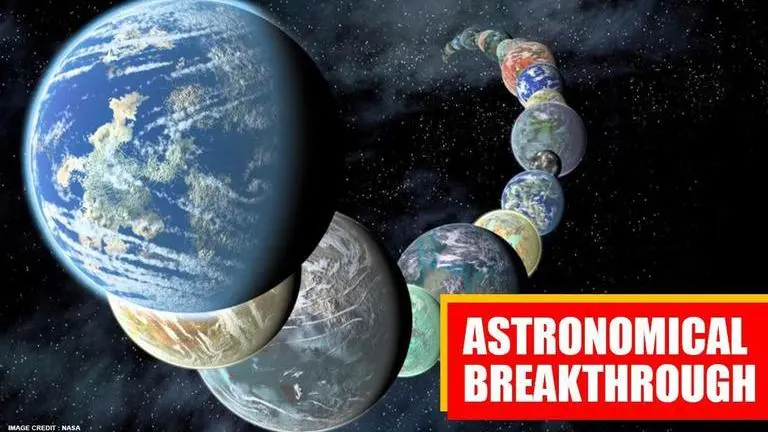Updated 26 August 2020 at 13:10 IST
Machine learning algorithm discovers 50 new planets from NASA's Kepler mission
A research team led by David Armstrong at the University of Warwick in the UK created a machine learning algorithm and trained it to validate exoplanets.
- Science News
- 4 min read

An AI algorithm has detected 50 potential planets that has stunned the scientists about the mysteries of undiscovered distant celestial entities. A research team led by David Armstrong at the University of Warwick in the UK created a machine learning algorithm and trained it using data on confirmed planets and false-positives from NASA's retired Kepler mission. The findings from the AI systems were published in Oxford's Monthly Notices of the Royal Astronomical Society journal.
"The algorithm we have developed lets us take 50 candidates across the threshold for planet validation, upgrading them to real planets," Armstrong said in a press release.
While Telescopes like NASA's Transiting Exoplanet Survey Satellite (TESS) records the glitch, asteroids, dust, binary star system basis the brightness, scientists sat down to sift through the Kepler data to analyze the actual planetary candidates. “Sky surveys find thousands of planet candidates, and astronomers have to separate the true planets from fake ones,” Warwick’s press release said. “For the first time, Artificial Intelligence was used to analyze a sample of potential planets and determine which ones are real and which are ‘fakes’, or false positives, calculating the probability of each candidate to be a true planet,” it added.
"The algorithm we have developed lets us take 50 candidates across the threshold for planet validation, upgrading them to real planets. We hope to apply this technique to large samples of candidates from current and future missions like TESS and PLATO.
In terms of planet validation, no-one has used a machine learning technique before,” —Professor David Armstrong of the University of Warwick's department of physics said in the study.
Advertisement
[This graphic shows that a small area around the Kepler-90 system, on the left, has been searched by the Kepler space telescope. Compared to our solar system, where we know of planets farther out, it is possible that Kepler-90 has even more planets. Credit: NASA]
[Kepler-90 is a Sun-like star, but all of its eight planets are scrunched into the equivalent distance of Earth to the Sun. The inner planets have extremely tight orbits with a “year” on Kepler-90i lasting only 14.4 days. Credit: NASA]
Advertisement
[Researchers using data from the W. M. Keck Observatory and NASA's Kepler mission have discovered a gap in the distribution of planet sizes, indicating that most planets discovered by Kepler so far fall into two distinct size classes. Credit: NASA]
Used a process 'Transitioning'
According to the release, the Previous machine learning techniques have detected and ranked celestial candidates in the past, but it never determined whether those candidates were confirmed planets or just star or something else, a crucial step for planet validation. Therefore, scientists carried out the first large-scale compare-and-contrast of novel planet validation techniques, which will statistically confirm future exoplanets. Scientists used a process, known as transitioning, to observe huge quantities of data gathered via telescopes between the Earth and their host star. However, to separate light dipping objects captured on telescopes with true exoplanets, scientists at Alan Turing Institute and Warwick's departments of physics and computer science built machine learning-method to identify planets from two large samples of confirmed planets and false positives from the now-defunct Kepler mission, as per the study. Ranging between the size of Neptune to the potential of Earth-like scales, scientists were able to detect planets that orbit up to 200 days and as low as one day.
"Machine learning has been used for ranking planetary candidates but never in a probabilistic framework, which is what you need to truly validate a planet,” Armstrong said. “ Less than a 1% chance of a candidate being a false positive, it is considered a validated planet."
Published By : Zaini Majeed
Published On: 26 August 2020 at 13:11 IST



